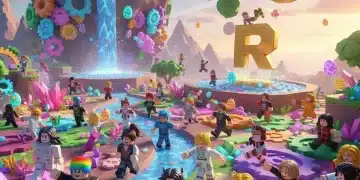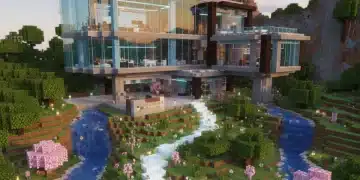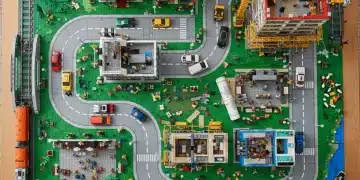Roblox Game Design: Create Addictive Games That Keep Players Coming Back
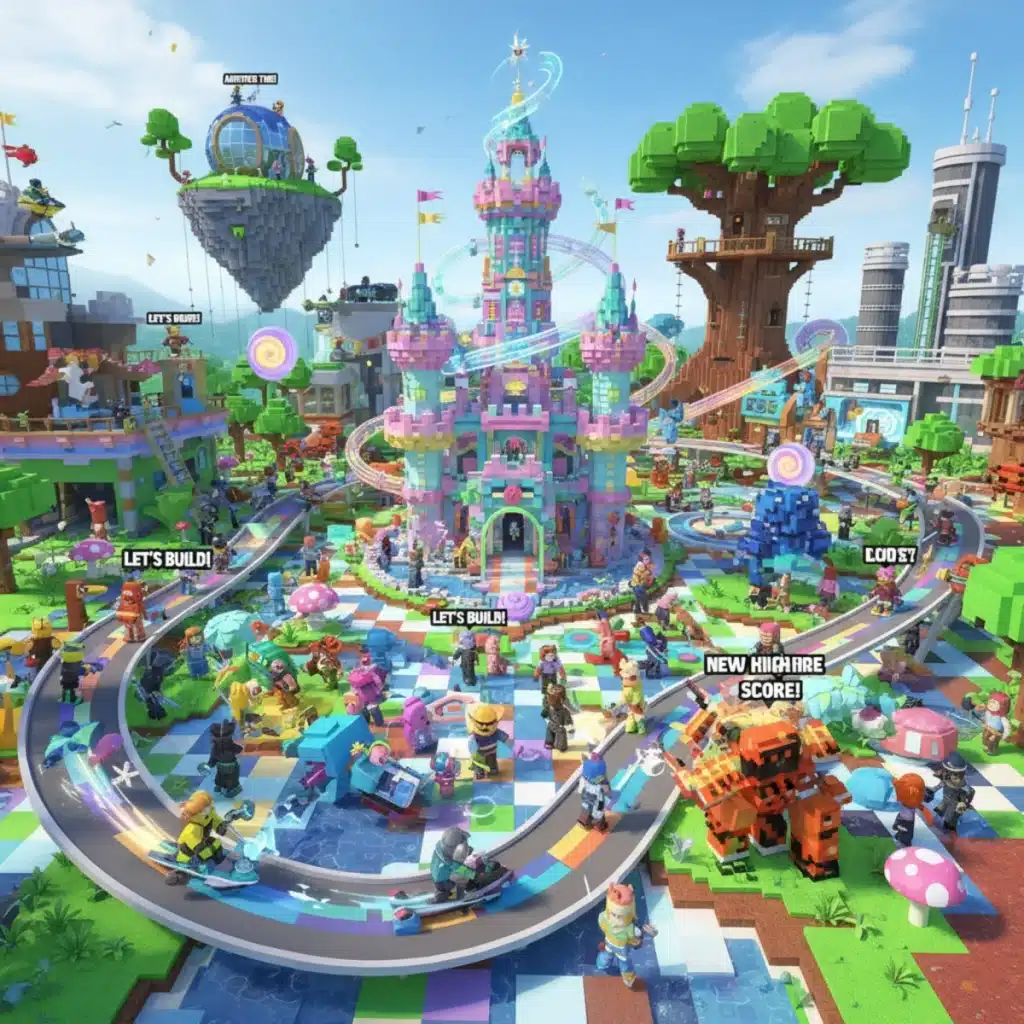
Advertisements
To create addictive Roblox games, focus on robust core mechanics, continuous content updates, strong community building, and understanding player motivations to ensure sustained engagement and repeatable fun.
Anúncios
Ever wondered how some Roblox games keep players hooked for hours, days, and even years? It all comes down to masterful Roblox game design: create addictive games that keep players coming back. This isn’t just about flashy graphics; it’s about understanding what makes a game truly compelling.
Understanding the Roblox Ecosystem and Player Psychology
Diving into Roblox game design requires more than just technical skill; it demands a deep understanding of the platform’s unique ecosystem and, crucially, the psychology of its vast player base. Roblox isn’t just a gaming platform; it’s a social hub, a creative outlet, and a virtual playground where millions of users, predominantly younger audiences, interact daily. Understanding their motivations, expectations, and how they engage with content is paramount to creating a game that resonates and retains.
Anúncios
Players on Roblox seek a variety of experiences, from competitive challenges and collaborative adventures to creative expression and social interaction. A successful game designer recognizes these diverse desires and crafts an experience that either caters to a specific niche exceptionally well or offers a broad appeal through varied gameplay loops. Ignoring player psychology can lead to games that, while technically sound, fail to capture the hearts and minds of the community.
The power of instant gratification
Roblox players, especially younger ones, often expect immediate rewards and clear progress. Game designs that incorporate quick wins and visible advancement tend to perform better in terms of initial engagement.
- Immediate feedback: Ensure actions have clear, satisfying consequences.
- Small, achievable goals: Break down larger objectives into smaller, manageable tasks.
- Visible progress: Use progress bars, level-up notifications, and leaderboards.
Social interaction as a core pillar
Roblox thrives on social interaction. Games that seamlessly integrate social elements naturally encourage players to bring their friends and stay longer. This could be through cooperative gameplay, competitive modes, or simply well-designed social spaces.
Ultimately, creating an addictive Roblox game begins with empathy for the player. By stepping into their shoes and understanding what drives their engagement, designers can lay a solid foundation for a game that not only attracts but also retains a dedicated player base within the dynamic Roblox ecosystem.
Crafting Engaging Core Gameplay Mechanics
At the heart of any addictive game lies its core gameplay mechanics. These are the fundamental rules and interactions that define how players engage with your game world. For Roblox game design, these mechanics must be intuitive, satisfying, and offer enough depth to maintain interest over time. A game with weak core mechanics, no matter how visually appealing, will struggle to keep players returning.
Consider the primary loop of your game: what do players do repeatedly? Is it collecting resources, battling foes, solving puzzles, or building structures? Each of these actions needs to feel rewarding and meaningful. The simplicity of execution combined with the depth of strategic possibility is often the sweet spot for creating truly sticky gameplay.
Designing intuitive controls
Roblox players come from varied backgrounds, and their comfort with complex controls can differ. Prioritizing intuitive and easy-to-learn controls is crucial for broad accessibility and immediate enjoyment.
- Simple keybindings: Avoid overly complex control schemes.
- Clear UI/UX: Ensure all on-screen elements are understandable.
- Tutorials: Offer brief, interactive guides for new players.
The progression system within your game is another critical aspect. How do players grow stronger, acquire new abilities, or unlock new content? A well-designed progression system provides a sense of accomplishment and a reason to keep playing. This could involve experience points, in-game currency, or unlockable items that change gameplay.
Furthermore, consider the balance of challenge and reward. Games that are too easy become boring, while games that are too difficult can lead to frustration. Finding the right curve ensures players feel challenged but always have a path to success, fostering a sense of mastery and continuous engagement within your Roblox game design.
Implementing Effective Progression and Reward Systems
Once players are drawn in by engaging core mechanics, it’s the progression and reward systems that keep them invested long-term. These systems provide a continuous sense of purpose and accomplishment, transforming casual play into a dedicated journey. Without well-thought-out progression, even the most fun initial experience can quickly become stale, leading players to seek novelty elsewhere.
A robust progression system offers players clear goals and visible milestones, reinforcing their commitment to the game. This isn’t just about leveling up; it encompasses everything from unlocking new areas and abilities to earning cosmetic items and achieving high scores. Each step forward, no matter how small, should feel like a significant achievement.
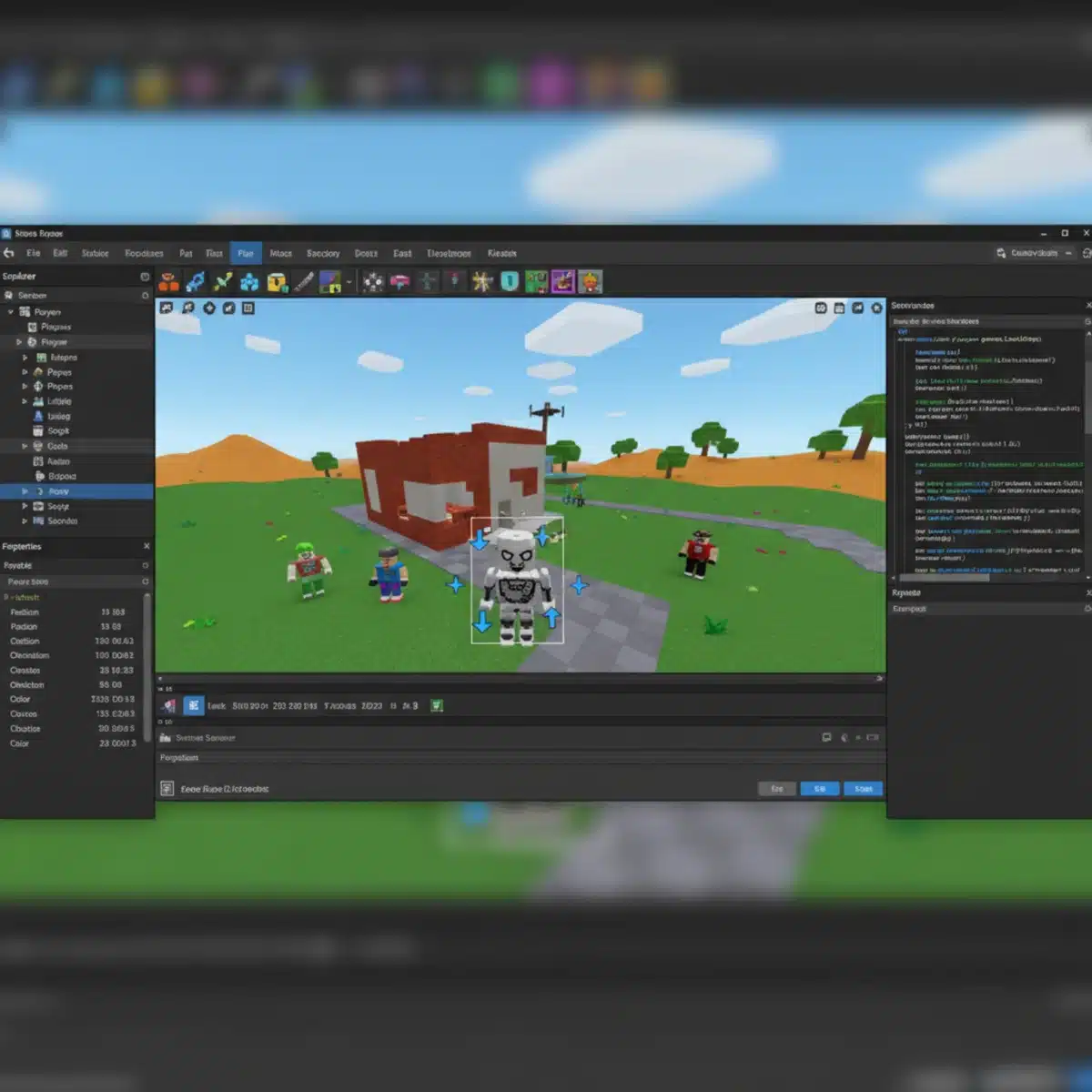

Variety in rewards
To keep players engaged, rewards shouldn’t be monotonous. A mix of functional, cosmetic, and social rewards caters to different player motivations.
- Functional rewards: New tools, weapons, or abilities that impact gameplay.
- Cosmetic rewards: Skins, accessories, or emotes for personalization.
- Social rewards: Leaderboard positions, titles, or exclusive access to areas.
The psychology of variable rewards
Incorporating elements of randomness or unpredictability into the reward system can significantly boost addictiveness. Players are often driven by the anticipation of a rare or valuable drop, which creates a powerful loop of engagement.
Beyond individual progression, consider how players can show off their achievements. Leaderboards, customizable profiles, and unique in-game titles can all contribute to a player’s sense of status and belonging. These social rewards are particularly potent in a platform like Roblox, where community and recognition play a significant role in player retention. Thoughtful implementation of these systems is a cornerstone of effective Roblox game design.
Fostering Community and Social Interaction
Roblox is inherently a social platform, and leveraging its community aspect is crucial for creating games that keep players coming back. A game that successfully fosters a strong sense of community transforms individual players into a collective, where shared experiences and interactions become as important as the gameplay itself. This social glue can dramatically increase retention and organic growth.
Think beyond just multiplayer modes; consider how players can interact, collaborate, and compete in meaningful ways. Providing spaces for social gathering, opportunities for cooperative play, and systems that encourage friendly competition can turn your game into a vibrant social hub. When players feel connected to others within your game, they are far more likely to return.
Implementing social features
Directly integrating features that facilitate communication and interaction can significantly boost community engagement.
- In-game chat: A well-moderated chat system.
- Friends systems: Easy ways to invite and play with friends.
- Guilds or clans: Group systems that foster teamwork and shared goals.
Events and challenges
Regularly scheduled in-game events and community challenges provide reasons for players to log in and interact, often working together towards a common goal or competing for unique rewards.
Moreover, active developer engagement with the community can build trust and loyalty. Listening to player feedback, addressing concerns, and openly communicating about future updates makes players feel valued and heard. This transparency strengthens the bond between the game and its community, making players more invested in its long-term success. A thriving community is a powerful engine for any successful Roblox game design.
Leveraging Updates, Events, and Live Operations
Even the most brilliantly designed game can lose its luster if it remains static. To ensure long-term addiction and retention in Roblox game design, a dynamic approach to content is essential. This means continuously evolving the game through updates, seasonal events, and thoughtful live operations. A living game world that changes and offers new experiences keeps players excited and provides compelling reasons to return.
Regular updates, whether they introduce new features, fix bugs, or tweak existing mechanics, demonstrate to players that the game is actively maintained and cared for. These updates don’t always need to be massive overhauls; even small, consistent improvements can make a big difference in player perception and engagement. The key is consistency and communication.
Seasonal events and limited-time content
Injecting urgency and novelty through limited-time events is a powerful tool for re-engaging players and encouraging immediate play.
- Holiday events: Themed content, decorations, and quests for seasonal holidays.
- New game modes: Temporary game modes that offer a fresh twist on existing gameplay.
- Exclusive rewards: Unique items or badges only obtainable during the event.
Balancing and re-evaluating mechanics
Live operations also involve continuous monitoring of game balance and player feedback. What might have worked at launch may need adjustments after weeks or months of player interaction to keep the experience fair and fun for everyone.
Furthermore, don’t underestimate the power of social media and community channels to announce and hype upcoming changes. Building anticipation for new content is almost as important as the content itself. By actively managing your game as a live service, you ensure it remains relevant, exciting, and a consistent source of entertainment for your player base, solidifying its place as an addictive Roblox experience.
Monetization Strategies and Ethical Design
While the primary goal of Roblox game design is to create an addictive and enjoyable experience, understanding monetization strategies is also crucial for sustaining development and ensuring the game’s longevity. However, it’s vital to approach monetization ethically, ensuring that revenue generation enhances rather than detracts from the player experience. A balanced approach ensures both player satisfaction and developer success.
Monetization on Roblox typically revolves around Robux, the platform’s virtual currency. This can involve selling game passes, developer products (one-time purchases), or creating premium experiences. The key is to offer value for money and provide optional purchases that feel additive, not essential, to enjoying the core game. Exploitative monetization can quickly alienate a player base and damage a game’s reputation.

Fair monetization practices
Transparency and fairness are key. Players should always understand what they are buying and why it’s worth the Robux.
- Cosmetic items: Offer unique outfits, accessories, or emotes that don’t affect gameplay balance.
- Time-savers: Allow players to purchase convenience items or speed up progression, but ensure these are also achievable through regular play.
- Exclusive access: Provide access to special areas or features that enhance the experience without being ‘pay-to-win’.
Avoiding ‘pay-to-win’ pitfalls
One of the biggest ethical pitfalls is designing games where success is predominantly determined by how much money a player spends. This can create an unfair environment and drive away players who prefer skill-based progression.
Instead, focus on creating a robust free-to-play experience, then offer premium content that enhances that experience without making it a requirement. This approach builds trust with your community and encourages voluntary purchases from engaged players who appreciate your game. Ethical monetization is a hallmark of sustainable and successful Roblox game design.
Testing, Feedback, and Iteration: The Path to Perfection
The journey of creating an addictive Roblox game doesn’t end with its initial release; it’s a continuous cycle of testing, gathering feedback, and iterating. Even the most seasoned developers can’t foresee every player interaction or discover every bug without real-world playtesting. This iterative process is what refines a good game into a great, long-lasting experience.
Early and continuous testing is vital. Don’t wait until the game is ‘finished’ to get outside opinions. Alpha and beta testing phases, even with a small group of trusted players, can uncover critical issues and provide invaluable insights into gameplay flow, difficulty, and overall enjoyment. This proactive approach saves time and resources in the long run.
Collecting player feedback
Establishing clear channels for players to provide feedback is crucial. Make it easy for them to report bugs, suggest improvements, and share their general thoughts on the game.
- Discord servers: Create a dedicated community hub for discussion and feedback.
- In-game surveys: Implement short, optional surveys to gather specific data.
- Social media monitoring: Pay attention to what players are saying about your game online.
The importance of iteration
Feedback is only useful if it leads to action. Be prepared to make changes, big or small, based on what you learn from your players. This willingness to adapt and improve demonstrates responsiveness and commitment to your community.
Remember, your game is a living product. Each update, each bug fix, and each new feature is an opportunity to improve the player experience and reinforce the addictive qualities of your Roblox game design. Embrace the iterative process, and you’ll build a game that not only attracts but also retains a dedicated and passionate player base for years to come.
| Key Aspect | Brief Description |
|---|---|
| Player Psychology | Understanding player motivations and desire for instant gratification and social interaction. |
| Core Mechanics | Designing intuitive, satisfying, and deep gameplay loops for sustained engagement. |
| Progression & Rewards | Implementing clear goals, varied rewards, and visible milestones for player investment. |
| Community & Updates | Fostering social interaction and delivering continuous content to keep the game fresh. |
Frequently asked questions about Roblox game design
An addictive Roblox game combines engaging core mechanics, satisfying progression systems, strong social features, and continuous updates. It’s about providing a sense of accomplishment, community, and novelty that makes players want to return repeatedly. Understanding player motivation is key to long-term engagement.
Community building is extremely important. Roblox is a social platform, and games that foster strong communities often see higher retention. Features like in-game chat, friend systems, guilds, and developer engagement make players feel connected and invested, encouraging them to stay and bring friends.
Ethical monetization focuses on offering optional purchases that enhance the player experience without being ‘pay-to-win.’ This includes selling cosmetic items, time-savers that are also achievable through play, or exclusive access to non-game-breaking content. Transparency and value for money are crucial for maintaining player trust.
Yes, regular updates are vital for long-term player retention. They show players the game is actively maintained and introduce new content, bug fixes, and balance changes that keep the experience fresh. Consistent updates, coupled with good communication, build anticipation and keep players engaged.
Player feedback is invaluable. It helps identify bugs, highlight areas for improvement, and gauge player sentiment. Actively listening to your community through forums, Discord, or in-game surveys, and then iterating on your design based on that feedback, is crucial for refining your game and ensuring its long-term success.
Conclusion
Creating an addictive Roblox game is a multifaceted endeavor that transcends mere technical execution. It demands a thoughtful fusion of understanding player psychology, crafting compelling core mechanics, implementing rewarding progression systems, nurturing a vibrant community, and committing to continuous iteration through updates and feedback. By prioritizing player experience, embracing ethical monetization, and maintaining a dynamic game world, developers can cultivate experiences that not only attract but genuinely captivate players, ensuring they keep returning to their virtual creations time and time again. The journey of Roblox game design is one of constant learning and adaptation, but the rewards of a thriving, engaged player base are immeasurable.

